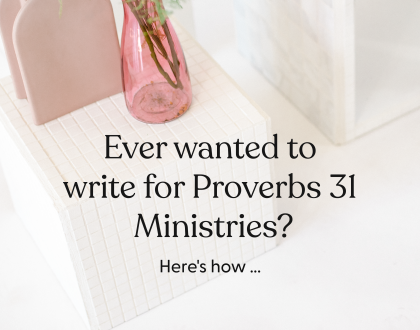by Suzie Eller
When we think of dialogue or setting a scene, we often delegate that to fiction. However, storytelling is just as powerful in nonfiction.
Consider this story.
“Can you name the one person you are angry with?”
The teenaged girl twirled a strand of auburn hair between her fingers. “Just one?”
“Okay, more than one. Share the names of people you struggle to forgive.”
She named ten quickly, bending a finger for each one. She would have named more, but I stopped her. “Are these people you are angry with or people you can’t forgive.”
“Both, but that’s okay. I don’t have anything to do with them.”
“Do you miss them?”
“No.”
The pain in her eyes said otherwise.
This is an example of narrative nonfiction from a book I wrote years ago titled, “The Mom I Want to Be: Rising Above Your Past to Give Your Kids a Great Future.” The topic was forgiving when it’s hard. I could have shared the story this way:
Forgiveness is hard for most of us. I once asked a teenaged girl to list the names of people she struggled to forgive. She named ten quickly. It didn’t take me long to realize that while she seemed tough on the outside, she was hurting inside.
Creative nonfiction, also called narrative nonfiction, unfolds real-life story with dialogue and storytelling. Rather than tell what took place or what to expect, you invite the reader to sit with you in that moment.
Today, we explore three elements of well-written narrative nonfiction (or how to tell a good story).
Research
Even if you are present in a scene, ask others what they heard. What they observed. This fleshes out the story. They may share something that is powerful.
Make sure your details are correct. This isn’t fiction.
Reality
In the conversation above there were lots of umms, hair twirling, and awkward pauses. If I reconstructed all of those, the reader would put the book down.
I presented the reality of the conversation minus the umms, foot swishing, and pauses to focus on the key conversation.
The key is that you can remove unnecessary elements (unless they shift the story or context), but you cannot add any in.
Review
Review your work to ensure that you remain truthful.
Review your work to ensure that your POV (point of view) isn’t slanted in a certain direction or that you are using the story out of context.
Review to make sure that a narrative nonfiction story is concise. To ensure that it has a purpose. That it doesn’t rabbit trail.
YOUR ASSIGNMENT IF YOU CHOOSE TO ACCEPT
- Choose one paragraph from a current work-in-progress and recreate it as narrative nonfiction.
- Share the title of a book where narrative nonfiction is used well.
Recommended Posts

Ever wanted to write for Proverbs 31 Ministries? Here’s how…
April 18, 2024

When Writing Feels Like a Nightmare
April 16, 2024

How To Write a Strong Introduction
April 9, 2024

We’re a group of volunteers and opening a new scheme in our community. Your site offered us with valuable info to work on. You have done a formidable job and our whole community will be thankful to you.
I recently wrote a devotion for my blog, The Spider-Web. I went into too much detail describing this particular spider and the anatomy of a web. I could have summarized the purpose in a more concise way. Here is a paragraph that I thought conveyed my thoughts without all the detailed science
“Oh what a tangled web we weave, when first we practice to deceive” by Walter Scott. Does that sound like a familiar quote? Every time I see a spider web this quote comes to my mind.
This spider spends her days creating an intricate web to catch her next meal. Her prey gets stuck, literally, and as it struggles becomes more entangled. And then, we’ll you can guess the rest of the story. The spider binds the victim in more webbing and then injects a paralyzing venom into its body. “
For the assignment, I’ve chosen a current work-in-progress to recreate it as narrative nonfiction. I love this assignment as it makes our writing effective for readers. 🙂
While I’m not including the paragraph here, I’ve included a quote from my sister that I’m working into the paragraph. “It sort of feels like your favorite shoes…the 15-year old sweatshirt that will be worn until it resists staying together anymore…or the satisfaction you feel after sitting down to your favorite homemade meal.”
That’s so great, Rose!
I’d choose one of those, rather than making your reader wade through three. However, I love each of them. Which will you choose?
On being truthful . . . a real conversation might include use of the wrong word, or a phrase that can be easily misunderstood, or something that paints the one speaking in a bad light. I’m selectively truthful; that is, I don’t go absolutely word for word inside the quotation marks–but it must be true to the gist of the conversation and the nature of the speaker.
Oh neat! I just did this with one of my posts when describing a game I did to teach the kids about water needs in Ethiopia! Radiant: Fifty Remarkable Women in Church History by Richard Hannula did a good job working this in their accounts of each woman. The facts tied neatly with the story make it come alive without fabricating it.
A client asked me to rewrite her journal into a screenplay. Since I have never written a screenplay I have just finished writing the first draft as a book. As I wrote I kept thinking how will this become a scene in a movie. It has helped me keep the scenes detailed, but necessary. There is a lot of dialogue. It has been a very effective technique for me and I plan to use in my future writing.
As for a book that uses this well I would say “The Glass Castle.”